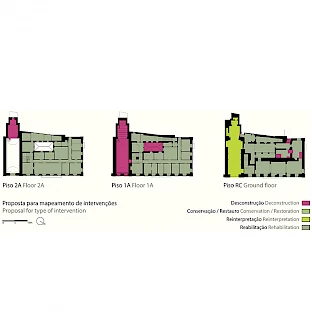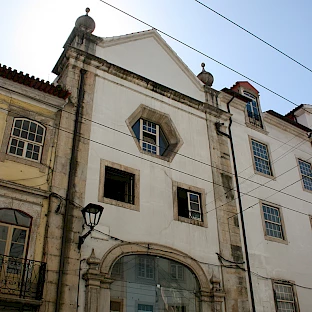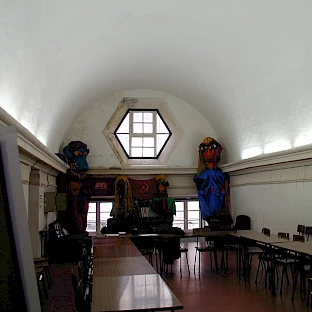Designation
College of Saint Bonaventure
Current occupation
Commerce
Ownership
Privately owned

Art-historical characterisation
Established on the site of some houses that the priests of the Order of Saint Francis had in Rua da Sofia, it was founded in 1550 by King João III and incorporated into the University in 1566. The college was rebuilt in 1715, for it was in a state of ruin.
When the Religious Orders were abolished in 1834, the College was closed. The building complex, which was already showing signs of disrepair, was eventually occupied by several local establishments in 1836, such as the Theatre Society of the College of Saint Bonaventure, or a metalworks and foundry, until it was acquired in its entirety by a private individual in 1859. Years later, a fourth floor was built, which would disfigure the top of the building.
Despite the continuous occupation of the monument, responsible for its progressive disfuguration, some elements of its exterior architecture and interior spatial organisation can still be identified today. The main façade, pilasters and cornerstones, resting on strong foundations, still reveal the silhouette of the original collegiate chapel. The interior still preserves the vaults belonging to what was probably the old refectory and some sets of stairs.
The building is now privately owned and used for commercial purposes.
The university colleges
When the University was definitively established in Coimbra in 1537 by order of King João III, the city was endowed with a series of collegiate buildings designed to receive students. Essentially built by different religious orders and bishops, they were a mixture of convent and student residence, with dormitories, refectories, study rooms, cloisters and churches. The first seven buildings in Rua da Sofia were joined by many others in the upper part of the city, totaling 25 in the 18th century.
In 1834, as part of the ‘General Ecclesiastical Reform’, all convents, monasteries, colleges and religious houses of all religious orders were abolished and their assets incorporated into the National Treasury. Many were reused as military barracks, hospitals, railway stations, etc., others were sold at public auction and bought by private individuals. In all cases, the change in functions and uses was radical.








